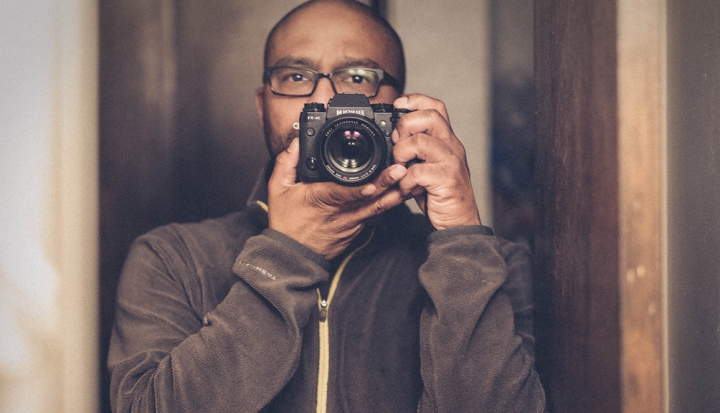Social media is great for keeping in touch, but some moments are more meaningful when experienced offline.
This summer I became well acquainted with the value of white noise. I quickly learned there’s nothing worse than a quiet house when you have a brand-new baby. So, we run fans. PBS is constantly playing on our TV. We never wait to run the dishwasher, and we encourage normal talking when we have visitors.
The noisier our house, the better. This works out to our advantage: When our son won’t settle down in the late afternoon (I now fully understand the term “witching hour”), we meet with friends at our favorite bar for a beer and a burger, where we encounter several other in-the-know couples with young children. The din of conversation and clatter of plates and glasses does little to wake our sleeping kids. I’m convinced my son gets his best sleep in these situations. Now if only I could figure out how to achieve such restfulness for myself.
The sight of my sleeping child is as close as I’ve come to bliss in these first few months. In these moments, I occasionally reach for my phone to snap a photo or capture him on video. The sound of his baby snore will surely make my friends laugh. Certainly, my parents and in-laws will want to see their grandson’s sweet face as he learns to giggle.
Last year, The Telegraph reported that parents who upload photos of their newborns to social media do so on average within 57.9 minutes of birth. That was according to a poll by a company that helps parents share photos digitally and in print. We waited hours, but shared a photo on the day of our son’s birth nonetheless. If you spend any time on Facebook, you know that baby photos make up a large percentage of the regularly updated content, so much so that there are apps for those who wish not to see their acquaintances’ kids so regularly.
Modern modes of communication make sharing our lives extraordinarily simple. There is Facebook, yes, but also Twitter, text messages, Instagram, and FaceTime. I remember being excited by free long-distance calls when I first got a cell phone in 2002. Nearly a decade and a half later, we introduced our baby to his aunts and uncles, grandparents, and great-grandparents via video chat. We announced his arrival to our friends—some of whom we last saw when we were small children ourselves—on Facebook. My sister and I regularly exchange pictures of our sons via text messages. For family who’ve chosen to avoid smartphones, I turn to e-mail for updates and photos. In a technological twist of irony, this has become the modern “snail mail.”
Yet somehow all this sharing isn’t enough. When my husband was on parental leave, his coworkers wanted to know why they hadn’t seen more pictures of our new arrival. Family members regularly ask me why I’m not posting more on Facebook, despite the fact that I’ve already eased up on the “no social media” rule I’d instituted before the baby arrived. Admittedly, it’s hard not to share more; the effect of 100 “likes” on a photo of our little boy is intoxicating and addictive. And when I am experiencing one of life’s most beautiful offerings, why wouldn’t I want to tell everyone I know about it?
The reason? Sure, I’m wary of the long-term results of publicly documenting my son’s life. I’d rather he not become an amalgamation of data to a nameless, faceless marketing machine. Much of that seems inevitable to some extent, however, for anyone who wants to participate in modern life.
The reason is more because the constant concern for documenting and sharing can prevent my active presence in the moments that matter most. When my son offered us his first smiles, his dad and I were so captivated that neither of us thought to grab a camera. After I told my sister-in-law that he’d started smiling, she asked if we took any photos. “Nope,” I responded. “We were too busy taking in the experience.” There will be more smiles to share but those very first ones belong just to us, our little family of three.
That’s not to say I don’t appreciate the value of social media. I’ve received sincere notes of congratulations on the birth of my son from people who otherwise would be faint memories. I also hope close friends and family have the opportunity to share in my son’s life.
What bothers me most about the constant presence of social media is just how noisy it is. Like with the white noise that can coax a baby into sound sleep, the perpetual din of social media can lull us into complacency. Advertisements show up alongside prayer requests, jokes, and vacation photos. You can scroll from some spectacular and meaningful personal revelation or beautiful photo of an old friend’s daughter to a tongue-in-cheek BuzzFeed quiz or a politically charged rant by someone you knew in high school. There’s no differentiating the kinds of things people share. Messages are easily forgotten. Communication becomes passive.
It just doesn’t matter to me whether every person from my social circle has unlimited access to those moments. By limiting how much social sharing I do (while not avoiding it entirely), it’s easier to be fully present in my new son’s life as well as in my husband’s. We can enjoy family moments without concern for how they translate to film and video. And thanks to a private photo stream, our extended family gets more access than an old high school friend. By being more intentional about how we use social media—and keeping it personal—we’ve managed to keep the way we communicate more meaningful, something especially important in these earliest months of our son’s life.
This article appeared in the October 2014 issue of U.S. Catholic (Vol. 79, No. 10, pages 40-41).
Image: Flickr cc by David Camerer













Add comment